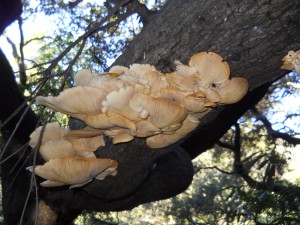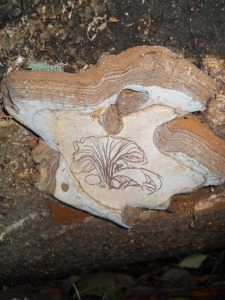The traditional view of hunter-gatherer or “subsistence” cultures is that their life was generally “a precarious and arduous struggle for existence” (Lee 1968).
In Leviathan, Hobbes sums up this view of “primitive” man without government in a quote, of which the last part especially has become a famous reference to such cultures:
“No arts; no letters; no society; and which is worst of all, continual fear, and danger of violent death: and the life of man, solitary, poor, nasty, brutish and short.”(Hobbes 1651)
However, empirical data on living hunter-gatherers (even though they tend to inhabit marginal, unproductive lands that agro-industrial cultures see as worthless) show a radically different picture (Lee 1968).
It should be obvious that our modern culture, though more connected than ever with the internet, is ironically the most lonely ever. The more “primitive” the culture, the less its “development,” the more socially connected it is.
As far as poor, a poor man is defined by not meeting his wants, and our insatiable wants are making us poor, rather than inherent lack of resources. Hunter-gatherers easily met all their wants and needs because they had so little to desire beyond food, family, community, and health.
Studies have clearly shown how little hunter-gatherers worked; such cultures spent more time dancing or socializing than working. And their “work” was hunting and gathering, activities which modern humans pursue (or vestiges of them such as hiking, camping, etc.) for entertainment.
“From July 6 to August 2, 1964, [anthropologist Richard B. Lee] recorded all the daily activities of the Bushmen living at the Dobe waterhole [in the Kalahari desert]… the camp population fluctuated… with a mean of 31.8 persons. Each day some of the adult members of the camp went out to hunt and/or gather while others stayed home or went visiting. … In all, the adults of the Dobe camp worked about two and a half days a week. Since the average working day was about six hours long, the fact emerges that the !Kung Bushmen of Dobe, despite their harsh environment, devote twelve to nineteen hours a week to getting food. Even the hardest working individual in that camp, a man named ≠oma who went out hunting on sixteen of the 28 days, spent a maximum of 32 hours a week in the food quest. … [This study was during] the mid-winter dry season, a period when food is neither at its most plentiful nor at its scarcest levels…” (Lee 1968)
“A woman gathers on one day enough food to feed her family for three days, and spends the rest of her time resting in camp, doing embroidery, visiting other camps, or entertaining visitors from other camps. For each day at home, kitchen routines, such as cooking, nut cracking, collecting firewood, and fetching water, occupy one to three hours of her time. This steady work and steady leisure is maintained throughout the year.” (Lee 1968)
“The hunters tend to work more frequently than the women, but their schedule is uneven. It is not unusual for a man to hunt avidly for a week and then do no hunting at all for two or three weeks. … During these periods, visiting, entertaining, and especially dancing are the primary activities of men.” (Lee 1968)
“…During the study period 410 pounds of meat were brought in by the hunters of the Dobe camp, for a daily share of nine ounces of meat per person. About 700 pounds of vegetable foods were gathered and consumed during the same period. … This output of 2,140 calories and 93.1 grams of protein per person per day may be compared with the Recommended Daily Allowances (RDA) for persons of small size and stature but vigorous activity regime of the !Kung Bushmen. …estimated ad 1,975 calories and 60 grams of protein per person per day. Thus it is apparent that food output exceeds energy requirements by 165 calories and 33 grams of protein… even a modest subsistence effort of two or three days’ work per week is enough to provide and adequate diet for the !Kung Bushmen.” (Lee 1968)
The Yanomamö from the Orinoco river watershed on the borders of Venezuela and Brazil were found to have similar productive efforts; making a living on only a few hours per day (Chagnon 1983). The Yanomamö spent more time blowing hallucinogens up their noses than obtaining food (Chagnon 1983).
A major key to this way of life is egalitarianism, sharing resources, lack of resource stockpiling, and lack of stealing (Gowdy 1998).
When hunter-gatherers come into contact with a market economy, they become as acquisitive as anyone else (Gowdy 1998). Why they do this may hold the key to a sustainable future (Gowdy 1998). The thesis of Flannery (1995) in his book The Future Eaters: an ecological history of the Australian lands and people is that “future eating,” or consuming resources needed for the future, is characteristic of humans, environmental factors such a periodic drought caused by El Niño limited Aborginal population size, and ecological coevolution created social customs that act to conserve scarce natural resources.
Affluence can be created in two ways; by producing much or desiring little. Hunter-gatherers were in the latter category, the “Zen road to affluence” (Sahlins 1972). The idea that their subsistence economy is a dismal, undesirable, and difficult lifeway is an ethnocentric prejudice, a bias of agro-industrial culture and economists not based on any anthropological research or empirical investigations (Stahlins 1972).
Yet this idea continues even to this day. We all learn in economics to compare economies against the “baseline” or rudimentary subsistence economy, a mere scraping for survival to compare against a more civilized economy based on stockpiling resources, getting more, spending and trading, with the ultimate ideal to possess and consume as much as possible per capita. The fundamental problem with economic theory is utterly ignoring natural resources and environmental degradation caused by “development.”
But where has this gotten us? Look around. In the US, the “standard” work-week is 40 hours. That’s two to three times the amount of work Bushmen perform. But 86% of males and 67% of females in the US work more than 40 hours per week. And while hunter-gatherers had healthy life satisfaction, community, and exercise inherent in their work, most of us are basically automatons in our jobs and must pursue our life satisfaction, community, and exercise in our spare time. Americans work more and take less vacation than any other country in the world. But the rest of the world, at least in agro-industrial cultures, work comparable hours, from around 20-50 hours per week, still all more than hunter-gatherers work.
Still satisfied with the “progress” of civilization? If not, ditch all your consumer needs you have been brainwashed into having by corporations and the governments they control. Live a simple life. Stop supporting the agro-industrial system that is killing you, your family, other humans, all living beings, and even the rocks, water, and atmosphere of our only planet. Reclaim your right to a healthy, happy, and satisfying life.
References:
Chagnon, N. A. 1983. Yanomamö: the fierce people. Holt, Rinehart and Winston, Inc., New York, NY.
Gowdy, J.M. (ed.) 1998. Limited wants, unlimited means: a reader on hunter-gatherer economics and the environment. Island Press, Covelo, CA.
Hobbes, T. 1651. Leviathan.
Lee, R. B. 1968. What hunters do for a living, or, how to make out on scarce resources. In Gowdy, J.M. (ed.) 1998. Limited wants, unlimited means: a reader on hunter-gatherer economics and the environment. Island Press, Covelo, CA.
Sahlins, M. 1972. The original affluent society. In Gowdy, J.M. (ed.) 1998. Limited wants, unlimited means: a reader on hunter-gatherer economics and the environment. Island Press, Covelo, CA.























